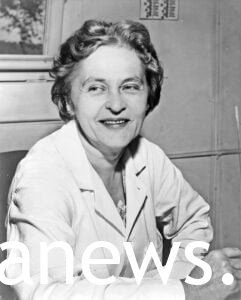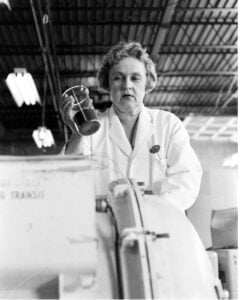Maria Telkes: Maria Telkes, a pioneering scientist in the field of solar energy, made significant contributions to the world that often go unnoticed. Born in Budapest in 1900, Telkes was a remarkable woman whose work laid the groundwork for modern solar technologies. Here are 11 fascinating but lesser-known facts about this trailblazing scientist.

1. Early Life and Education
Maria Telkes demonstrated her passion for science from an early age. She pursued her education at the University of Budapest, earning a degree in chemical engineering in 1920. Her thirst for knowledge and curiosity about renewable energy sources started shaping during these formative years.
2. The First Female Biophysicist
Telkes earned the distinction of being the first female biophysicist in the United States. Her groundbreaking research combined biology and physics, exploring the intersection of these two disciplines to unlock new possibilities in the world of energy.

3. Solar Distillation
In the 1940s, Telkes developed a solar-powered distillation system that used sunlight to produce fresh water. This invention was crucial during World War II when traditional energy sources were scarce, and her innovation offered a sustainable solution to address the water shortage.
4. The Dover Sun House
Maria Telkes collaborated with architect Eleanor Raymond to create the Dover Sun House in 1948. This house was a pioneer in the field of solar architecture, showcasing Telkes’ solar heating system that utilized chemical reactions to store and release solar energy.
5. Solar-Powered Desalination
In the 1950s, Telkes worked on another groundbreaking project – a solar-powered desalination unit. This technology was designed to convert seawater into freshwater using solar energy, providing a sustainable solution to address water scarcity issues around the world.
6. Solar Energy in Outer Space
Telkes’ innovative thinking extended beyond Earth. She explored the application of solar energy in outer space, envisioning a future where spacecraft could harness the power of the sun for various energy needs. Her ideas paved the way for solar-powered satellites and space exploration.
7. Materials Science Pioneer
Maria Telkes was a pioneer in the field of materials science. Her work involved developing novel materials for solar devices, pushing the boundaries of what was possible in terms of efficiency and durability. Her contributions to materials science continue to influence advancements in solar technology.

8. Collaboration with Kellex Corporation
During the 1950s, Telkes collaborated with the Kellex Corporation, working on projects related to the development of materials for nuclear reactors. Her expertise in materials science was instrumental in advancing research in this critical area.
9. Contribution to the National Aeronautics and Space Administration (NASA)
Telkes’ expertise in solar energy and materials science led to her involvement with NASA in the 1960s. She contributed to projects that aimed to harness solar power for space missions, further solidifying her legacy as a pioneering figure in the field.
10. Academic Achievements
Maria Telkes held various academic positions, including a professorship at the Massachusetts Institute of Technology (MIT). Her teachings and mentorship inspired future generations of scientists and engineers, leaving an indelible mark on the academic community.
11. Legacy and Recognition
Despite her groundbreaking contributions, Maria Telkes remains somewhat overlooked in popular history. However, her work has not gone unnoticed by the scientific community. In 1977, she was awarded the Charles Greeley Abbot Award by the American Solar Energy Society, recognizing her outstanding contributions to the field.
Maria Telkes was a visionary scientist who paved the way for the integration of solar energy into our daily lives. Her innovative ideas and groundbreaking inventions continue to influence the field of renewable energy, making her a true unsung hero in the history of science and technology.
WRITTEN BY COLLINS


Comments are closed.